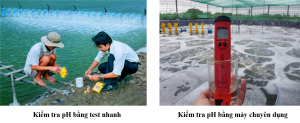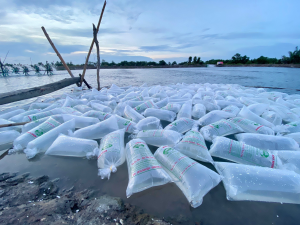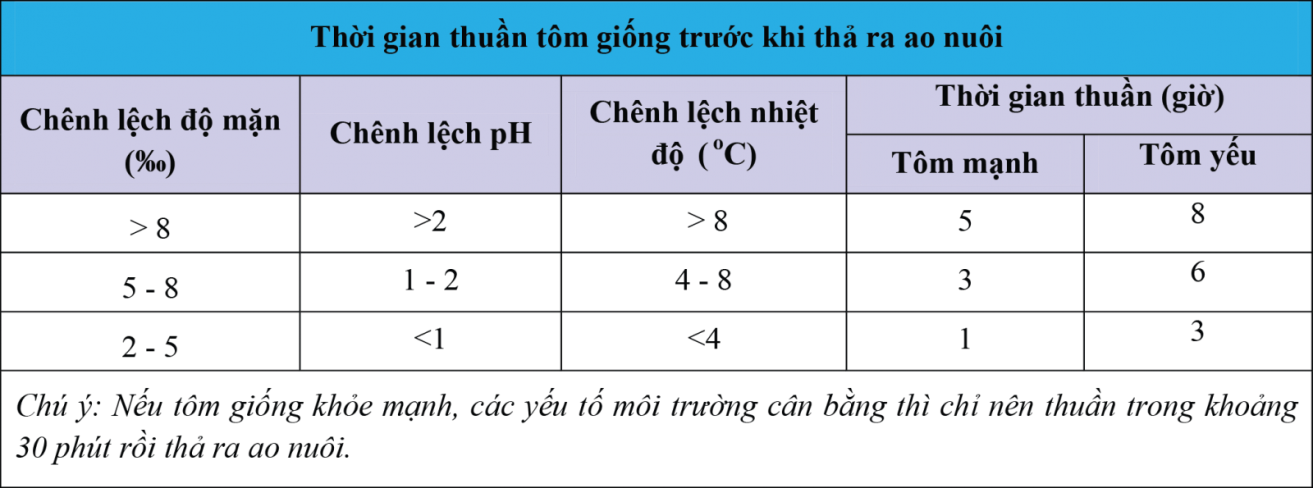A successful farming crop requires aspects such as pond preparation, PL quality, farming technique, season, weather, and so on. The appropriate discharge of PL is the first step in the growth and development of farmed shrimp.
The proper manner of stocking shrimp is equally critical. Aside from picking shrimp from a reputable source, farmers must also prepare to receive shrimp, choose a suitable stocking location, tame shrimp before stocking, and release shrimp straight into the pond.
Preparing to receive shrimp:
In order for the preparation to receive the PL to be convenient and effective, as well as to aid in the health of the shrimp during stocking, farmers must complete the following tasks:
Make sure you have enough human resources and equipment to transport and stock shrimp.
Prepare the best place for shrimp stocking.
Prepare all of the instruments for taming shrimp seed (shrimp breeding tank, aerator, shrimp stocking tube, shrimp food…); if you are releasing directly, you must prepare a shrimp cage directly at the location of shrimp stocking (bamboo frame, plastic pipe, plastic wire).
Prepare some additional items, such as minerals, yucca, vitamin C, and multivitamins, to help prevent shock and swiftly restore shrimp health.
Prepare some equipment for testing the water environment in the shrimp wrap and the pond before stocking, such as an alkalinity test, a pH test, a thermometer, salinity meter, and so on.
Before stocking, inspect the pond’s water environmental parameters.


Suitable mode of transportation.
Set up a good stocking location.
The location of stocking must be wide, flat, and close to the highway, making shrimp reception and transfer operations convenient and quick, and reducing shrimp stocking time.
The place for stocking must be in the direction of the wind since the water source is cleaner and the shrimp will spread more quickly after being thrown into the pond.
To ensure a high concentration of dissolved oxygen, the shrimp stocking area must be close to the water fan. This will also aid in the shrimp dispersal process.
When stocking, the location should guarantee a solid pond bank (prevent landslides and hazy water), as well as the ability to set up a frame easily enough to keep the shrimp wrapped if the direct stocking is used.
Preparation of the water quality for stocking
Due to the lengthy process of transporting shrimp, the water environment in the shrimp bag undergoes numerous changes that are very different from the pond water environment at the time of stocking (temperature, pH, alkalinity, salinity, etc.). In particular, the water temperature during transportation is much lower than the pond water temperature (shrimp larvae are typically transported in water that is between 22 and 23 oC). Shrimp physiological processes will be disrupted by sudden changes in the water environment, which will shock the shrimp seed and lower its development and survival rates. As a result, environmental purification is crucial in assisting shrimp in acclimating to the pond’s whole new habitat.
Farmers must conduct the following in order to effectively tame the aquatic environment prior to stocking:
To maintain biosafety, shrimp taming equipment needs to be cleaned.
In the tame tank, there should be 300–500 PL/L water.
Put the entire shrimp in the tame tank and continuously open the aeration to ensure there is ample oxygen.
The temperature, pH, alkalinity, and salinity of the water in the postlarvae should be compared to environmental conditions outside the pond.
To maintain the proper temperature and environmental conditions, slowly add fresh water from the raising pond to the pure tank. Depending on the postlarvae’s health and the variations in environmental conditions between the pond and the hatchery bag, the tempo of watering might be fast or sluggish. For instance, pond water and the water in the shrimp bag have relatively similar environmental characteristics (particularly in terms of temperature and pH), the shrimp bag can be refilled more quickly, and the shrimp can be domesticated quickly shorter period
If you have to keep tamed shrimp for a long period, you should give them extra food so they can heal more rapidly and stop biting one another. can employ live artemia or high-nutrition industrial feed. For tame shrimp, 100g/10,000 PL of feed is utilized (feeding time: 60 minutes). The degree of environmental difference between the pond habitat and the shrimp wrap determines when shrimp became domesticated.
To aid shrimp in recovering rapidly and reducing stress, add vitamin C (5 ppm) and a multivitamin (1 ppm) to the tame tank.
When the water environment elements are balanced and the shrimp is ready to be released into the pond, the valve is opened or a plastic pipe is used to suction shrimp from the tame shrimp tank into the pond.
Method for directly releasing shrimp into the pond
Farmers typically utilize this strategy while stocking shrimp. When shrimp is returned to the pond prior to stocking, it must be in good condition, there must be no significant difference in water environment parameters between the pond and the postlarvae (particularly pH and salinity), and it must be balanced. The temperature of the water between the shrimp wrap and the pond.
The steps for implementing this technique are as follows:
Carry out the preparations outlined in Part 2 (keep in mind that there is no need to prepare tame tanks, aerators, or food for a tame environment).
Set up a bamboo frame in the pond near the stocking area to keep the shrimp packets safe.
To boost dissolved oxygen in the water, run the aerator for at least 5 hours before stocking
Soak the shrimp for around 30 minutes in the pre-designed position to balance the temperature (the length of pure temperature depends on the shrimp’s health and the degree of temperature difference between the shrimp wrap and the pond water).
After the temperature has been regulated, release the shrimp into the pond, sprinkling vitamin C directly at the shrimp stocking region to aid in the shrimp seed’s recovery and resistance to shock. Minerals can be put into the shrimp after 30 minutes of stocking to assist them harden quickly after peeling.

Tame shrimp directly stocked in the pond
It is important to note that you should not wade into the pond, but rather use a canoe, bridge, or buoy to avoid turbidity in the stocking area and maintain biological safety.
By Master Huynh Duy Phong – Binh Minh Aquaculture Development Co., Ltd

 Tiếng Việt
Tiếng Việt 中文 (中国)
中文 (中国)
